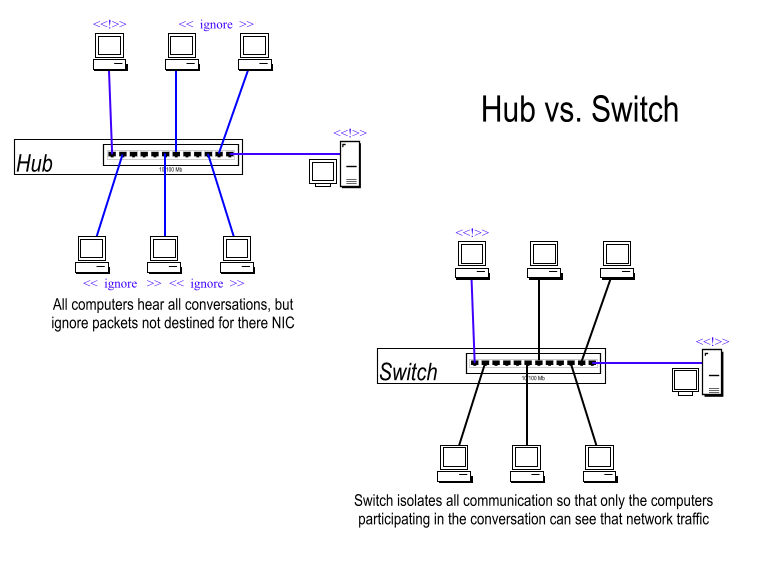Networking
Devices

Networking |
 |
| The University of Findlay's College of Education | |
The Hub and Switch
At the center of the star topology is the hub. A hub is the simplest networking device. It provides basic communication to all devices connected. Hubs and switches are interchangeable, in that each looks the same and fulfills the same network function as the other. The difference is in how each isolates network traffic.
The hub was first called a repeater and utilizes a "shared" environment. This is because it relays all incoming messages to all connected devices. If compared to the telephone system, a hub is like a party line. If someone is using the line, all other people on that line can hear the conversation, and cannot use the line until the first call is terminated.

One important difference in hub and switch technology is how each handles traffic from multiple computers. A hub is a party line, so if one computer is using the hub, no other computer can use the network until the original conversation is complete. In addition, all other computers connected to the hub will "hear" (but ignore) the data being transmitted. The technology in a switch isolates all traffic port by port, based on the MAC address(s) of the computer(s) connected to the port. If a computer plugged into port number one initiates a conversation with port twenty-four, no other ports will be able to observe the packets in that conversation. The security risk associated with the "party line" nature of the hub is usually reason enough to move to a switched environment.
The traffic segregation of switches has another speed advantage. Two conversations can happen at the same time without interfering or reducing the speed of either. Port one can communicate with port two while port three communicates with port four. These two conversations will each happen at the full speed of the switch.
Hubs and switches are classified by speed and number of ports. The slowest class is the 10 Mb hub or switch. The next faster class is 100 Mb and the fastest is 1000 Mb or Gigabit. The number of ports is simply the number of devices that can be connected to the hub or switch. The number of ports ranges from as few as four up to 48 or 96. Most devices have between five and 24 ports.
A switch uses NIC MAC addresses to distinguish one computer from another. A Media Access Control address or MAC address is a unique hexadecimal serial number burned into every ethernet device. Each MAC address is 6 bytes in the length and look something like this:
00-08-74-E9-44-39
The first three bytes specify the manufacturer. The last three bytes are unique for each device.